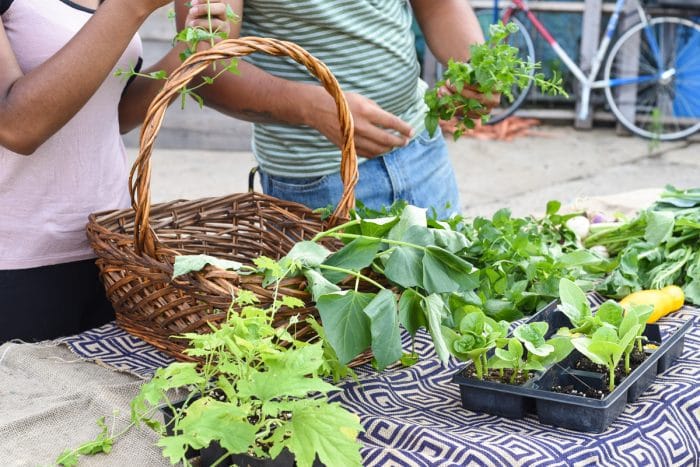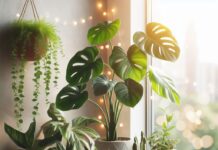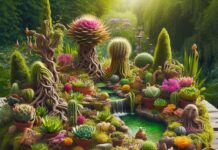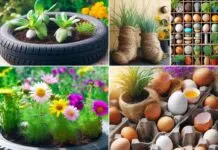Top 6 Simple Steps To Convert Your Attic Into A Thriving Indoor Garden
In the modern age, people realized that they do not need a storage place in the attic, where they leave old furniture and stuff that they do not use. Usually, they make another room for a child, or some make those man caves where they have all that they need to entertain themselves.
1. Light
It is common knowledge that plants need a lot of sunlight so that they can grow as they are intended to. To flourish, everything requires energy. Photosynthesis is the process through which plants obtain energy from light.
This is how light impacts a plant’s growth. A plant would not be able to create the energy it requires to grow if it were not exposed to light. Plants require light to grow, yet not all light or plants are created equal. When people are talking about different kinds of light, they talk most likely about the light spectrum.
The light that falls within the “blue” range of the light scale has an impact on plants. Daylight, fluorescent light, and grow lights all contain “blue” tones and will assist your plant get the light it requires. Incandescent and halogen lights are more “red,” and will not aid in the growth of your plant.
That means that you should have many windows, at least at the side where the Sun is shining the most. If you believe your roof does not receive enough sunshine, you may contact these experts at techlinerfg.com to determine the best approach for resolving the problem. You should even try to install new windows if your old ones are not so plant-friendly. Installing many lights can also be of help for the growth of your plants.
2. Clear out the Place
If you want to make a lovely big garden in your attic, you need to clear out all the stuff from your attic and clean the place completely. You should also do a repaint if there is a need for it. Clean the windows so that light can properly get inside.
3. You Need a Lot of Pots
Pot materials, sizes, and designs come in a wide range of options, and what you choose depends on the plant’s moisture demands and size. Drought-tolerant plants that demand fast-draining soil should be planted in clay or unglazed ceramic pots. For plants that need to be kept wet, use plastic, metal, or glazed ceramic.
The most essential thing to remember about houseplant pots is that you realize the influence your decision will have on your plant’s growing environment. You can change the way you care for your houseplants to fit practically any pot. You could also put some pots to hang from the ceiling so that you utilize as much space as you can.
4. The Right Soil
Going to the garden shop to buy potting soil might be a bit unsettling. It might be tough to decide which product is ideal for the plants you want to cultivate when there are so many options. Some are best for containers or pots, while others are best used in the garden or to fill raised beds.
Garden soils often contain minerals and organic matter and are meant for usage in the ground. Because the soil can rapidly get compacted and wet, restricting air space around the roots, they are not a suitable choice for containers. This might result in stunted or impaired growth. If garden soil hasn’t been pasteurized, it may contain weed seeds, insects, and illnesses.
Potting mixes (also known as soilless mixes) are particularly designed for growing potted plants. They are light, moisture-retaining, and provide ample air space around the roots. One of the most important features of the potting mix is air space. A plant will likely die if its roots don’t get adequate air. Good mixes always include an organic component (peat moss, compost, bark), vermiculite or perlite (to help retain moisture), sand, fertilizers, and limestone, however, the exact components vary.
Some incorporate fertilizer or moisture-retention treatments, which are normally labeled. Knowing what’s in the potting mix can help you figure out if it’ll work for the plants you’re attempting to grow. For most annuals and vegetables planted in pots, general potting mixes will suffice.
5. What to Grow
Hybrid and dwarf plant species, in general, are a smart option in pots since they require less area to thrive. Green beans are a lovely addition to any balcony or patio because of their gorgeous foliage and blossoms. Growing beans in pots may be done in two ways. You can either cultivate a “bushy” bean that will grow happily in a container without any additional support, or you can grow a climbing bean that will climb up a trellis.
Because you can run them up against walls, this is great for making the most of your vertical space. This bushy bean type is small, compact, and tidy, making it excellent for growing in small areas. Sweet, crisp, and soft, these beans are ideal for eating right from the plant. They grow best in full light and may be harvested in 55 days.
Chili peppers are ideal for adding flavor to small places. They require a bright and warm environment to flourish and are both prolific and beautiful. They will gladly thrive as long as you can supply that. ‘Jalapeno Early’ is an heirloom variety that blooms early in the season, which means this type of pepper plant will yield more quickly. You can expect a 65 to 70-day maturation period with good yields.
6. Utilize the Old Furniture
Before you take anything out of the attic, you might use it to put plant pots on it or even use it as a pot. For example, if you have an old globe you could cut it in half and it would be an unusual pot for your vegetables. Also, you can use an old hat stand for elevating some plants.
Making an inhouse garden is a lovely idea, it uses wasted space like the attic room and makes it out of them something useful. Producing your food is great for your health because you want to use pesticides which can be found in most food today.











